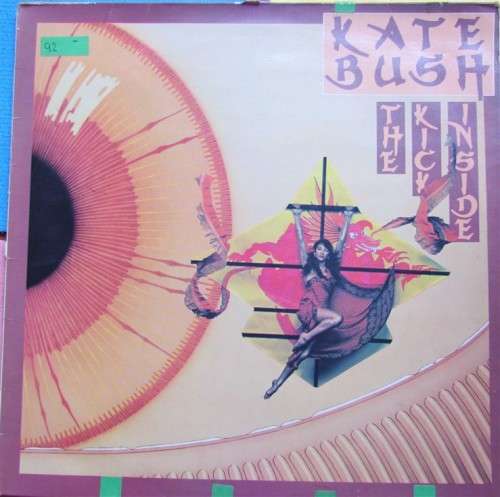
It's there too in the childhood reminiscence of "A Coral Room", the almost autistic satisfaction of the obsessive-compulsive mathematician fascinated by "Pi" (which affords the opportunity to hear Bush slowly sing vast chunks of the number in question, several dozen digits long - which rather puts singing the telephone directory into the shade), and particularly "Mrs Bartolozzi", a wife, or maybe widow, seeking solace for her absent mate in the dance of their clothes in the washing machine. It's not just a case of parental bliss - although her affection for "lovely, lovely Bertie" spills over from the courtly song specifically about him, to wash all over the second of this double-album's discs, a song-cycle about creation, art, the natural world and the cycling passage of time. “ As might be expected of an album which breaks a 12-year silence during which she began to raise a family, there's a core of contented domesticity to Kate Bush's Aerial. Here is what The Independent wrote in 2005: I don’t think it was a case of reacting to the fact that this was Bush’s first album in twelve years, either: the sheer scope and beauty of Aerial was hugely moving in 2005 and it still knocks you back almost fifteen years later. Although one or two sources did not give Aerial a terrific review – NME, and Pitchfork scored it lower than most -, the majority of those who assessed Aerial were blown away. Never one to stand still and repeat herself, she would move more into Jazz territory by the time of 50 Words for Snow.

Aerial marries elements of Folk and Flamenco alongside Classic elements styles and tones that are not overly-present in previous Bush albums. On most of her studio albums, Bush employed a variety of musicians and incorporated a number of styles and genres in order to give her albums depth and so much colour. I have always been fascinated by Bush’s development and building sonic palette through the years. I am going to focus on a few songs from Aerial in future features, but I wanted to do a more general overview and broader sweep this time around. I guess being a new mum did inspire creative urge and inspiration she might not have otherwise had, but even though she was still signed to EMI in 2005 – she formed her label Fish People, later, and is now working with EMI in a much lesser capacity -, there was not a huge amount of promotion.Īerial does not feature Bush on the cover ( The Red Shoes only featured her feet), and there are a couple of good interviews around the time, though she was more forthcoming regarding promotion by time she released Director’s Cut, and 50 Words for Snow in 2011. A lot of Aerial has Bertie running through its blood, and Bush was prioritising motherhood above recording. Her son, Bertie, was born in 1998, and she wanted to spend as much time with him as possible. By 2005, Bush had pushed further away from the media. Although Hounds of Love’s The Ninth Wave has tension and drama throughout, there is something more relaxed and contemplative on Aerial’s A Sky of Honey. If anything, Aerial’s second side (or second album, technically) is more ambitious and astonishing.

As I have explored in previous features – and I will come onto -, there are similarities between Hounds of Love of 1985 and Aerial, in the sense that both have first sides that are more conventional and are not defined by a theme/narrative, whereas there is a conceptual second side. There was always speculation and potential, but after twelve years, even the most ardent Kate Bush fans might have lost a bit of hope! Not only did she come back with an album: Aerial is Kate Bush’s only double album to date. Its anniversary happens on 7th November, and it was a huge event! Aerial arrived twelve years after The Red Shoes, and there was no real indication to suggest that there would definitely be another album. Fifteen years of one of Kate Bush’s finest albums, Aerial.


 0 kommentar(er)
0 kommentar(er)
